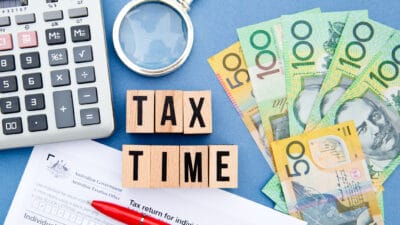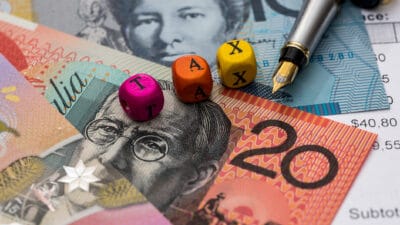It's nearly the end of FY23. It's time for investors who are thinking about selling their ASX shares to understand what might happen if they do.
Buying shares is a pretty easy process, but selling can come with some knock-on taxation implications. So it's important to weigh up whether it's the right decision to sell.
The Australian Taxation Office (ATO) has an array of data-matching abilities these days. If you sell an investment, the ATO will know and expect the Aussie taxpayer to report as such in the capital gain segment (schedule) of their tax return.
Let's look at what might happen in basic terms for an individual, assuming a sale does take place. Bear in mind too that there are many elements to capital gains tax, so a tax accountant can help here.
Capital gain or loss?
Before we get into the ins and outs, if an investor is sitting on a big unrealised gain and thinking about selling their ASX shares, it could be worth considering delaying the sale until early July. That will also delay having to pay tax on the sale for another 12 months as July 2023 will be part of the FY24 tax year. A sale in June 2023 needs to be included in the FY23 tax return.
When a sale is made, taxpayers (or the tax accountant) need to figure out whether the sale led to a capital gain or capital loss.
We compare the sale proceeds to the cost base. The cost base includes the actual cost of the shares, the brokerage to buy the shares, and the brokerage to sell the shares. Say we bought $1,000 of ASX shares and paid $10 of brokerage, and sold it for $2,000 after 13 months, with $10 of brokerage selling costs. That's a cost base of $1,020 ($1,000+$10+$10) and a capital gain of $980.
If the cost base was more than the sale proceeds, it would result in a capital loss. Capital losses can be used to offset other share sales that have made capital gains.
But keep in mind that taxpayers shouldn't undertake wash selling. That's where investors sell their ASX shares at a loss, just to harvest the capital losses and then re-purchase the same share investment. The ATO doesn't like that.
What happens when we make a capital gain on ASX shares?
The taxpayer needs to work out what the net capital gain on their sale is.
We've already discussed comparing proceeds to the cost base. The next step is to look at whether there are capital losses to utilise (including capital losses brought forward from previous tax years). Any capital gains are offset against losses.
After utilising losses, if there are any gains remaining on sales of ASX shares that had been held for over 12 months, then the ATO allows investors to apply a 50% CGT [capital gains tax] discount.
In my example above where a $980 capital gain was made after 13 months, the gain is halved to $490.
The $490 — or whatever the capital gain figure is for all applicable gains and losses — is then added to the taxable income for the taxpayer in that year's tax return.
What happens to losses that aren't used that year?
Typically, when the end result of doing tax return calculation is a net loss, those losses can be carried forward to future tax years to offset future capital gains. It's worth noting the ATO says there "is no time limit on how long you can carry forward a net capital loss".
That said, capital losses cannot be offset against 'normal' income like wages or dividends.
Foolish takeaway
If all that sounds a bit too complicated, don't worry. That's exactly what personal tax accountants deal with all day. It doesn't need to be tricky, as online brokers provide lots of documentation to help with all the information required.






